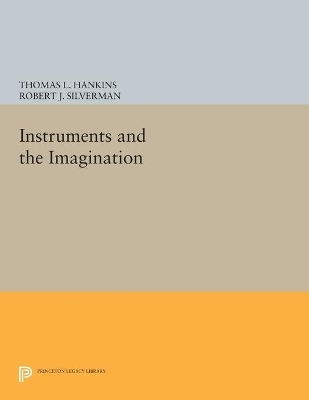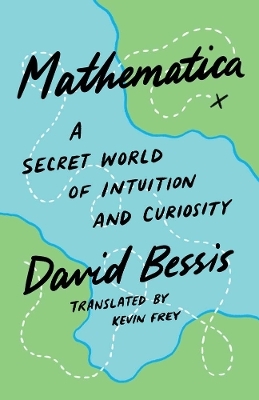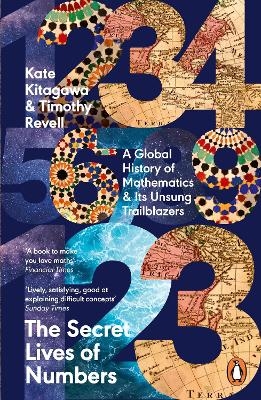
Instruments and the Imagination
Seiten
2014
Princeton University Press (Verlag)
978-0-691-60645-3 (ISBN)
Princeton University Press (Verlag)
978-0-691-60645-3 (ISBN)
- Lieferbar
- Versandkostenfrei
- Auch auf Rechnung
- Artikel merken
Thomas Hankins and Robert Silverman investigate an array of instruments from the seventeenth through the nineteenth century that seem at first to be marginal to science--magnetic clocks that were said to operate by the movements of sunflower seeds, magic lanterns, ocular harpsichords (machines that played different colored lights in harmonious mixtures), Aeolian harps (a form of wind chime), and other instruments of "natural magic" designed to produce wondrous effects. By looking at these and the first recording instruments, the stereoscope, and speaking machines, the authors show that "scientific instruments" first made their appearance as devices used to evoke wonder in the beholder, as in works of magic and the theater. The authors also demonstrate that these instruments, even though they were often "tricks," were seen by their inventors as more than trickery.
In the view of Athanasius Kircher, for instance, the sunflower clock was not merely a hoax, but an effort to demonstrate, however fraudulently, his truly held belief that the ability of a flower to follow the sun was due to the same cosmic magnetic influence as that which moved the planets and caused the rotation of the earth. The marvels revealed in this work raise and answer questions about the connections between natural science and natural magic, the meaning of demonstration, the role of language and the senses in science, and the connections among art, music, literature, and natural science. Originally published in 1995. The Princeton Legacy Library uses the latest print-on-demand technology to again make available previously out-of-print books from the distinguished backlist of Princeton University Press. These editions preserve the original texts of these important books while presenting them in durable paperback and hardcover editions. The goal of the Princeton Legacy Library is to vastly increase access to the rich scholarly heritage found in the thousands of books published by Princeton University Press since its founding in 1905.
In the view of Athanasius Kircher, for instance, the sunflower clock was not merely a hoax, but an effort to demonstrate, however fraudulently, his truly held belief that the ability of a flower to follow the sun was due to the same cosmic magnetic influence as that which moved the planets and caused the rotation of the earth. The marvels revealed in this work raise and answer questions about the connections between natural science and natural magic, the meaning of demonstration, the role of language and the senses in science, and the connections among art, music, literature, and natural science. Originally published in 1995. The Princeton Legacy Library uses the latest print-on-demand technology to again make available previously out-of-print books from the distinguished backlist of Princeton University Press. These editions preserve the original texts of these important books while presenting them in durable paperback and hardcover editions. The goal of the Princeton Legacy Library is to vastly increase access to the rich scholarly heritage found in the thousands of books published by Princeton University Press since its founding in 1905.
List of IllustrationsAcknowledgmentsCh. 1Instruments and Images: Subjects for the Historiography of Science3Ch. 2Athanasius Kircher's Sunflower Clock14Ch. 3The Magic Lantern and the Art of Demonstration37Ch. 4The Ocular Harpsichord of Louis-Bertrand Castel; or, The Instrument That Wasn't72Ch. 5The Aeolian Harp and the Romantic Quest of Nature86Ch. 6Science since Babel: Graphs, Automatic Recording Devices, and the Universal Language of Instruments113Ch. 7The Giant Eyes of Science: The Stereoscope and Photographic Depiction in the Nineteenth Century148Ch. 8Vox Mechanica: The History of Speaking Machines178Ch. 9Conclusion221Notes233Bibliography287Index325
| Erscheint lt. Verlag | 14.7.2014 |
|---|---|
| Reihe/Serie | Princeton Legacy Library |
| Zusatzinfo | 90 halftones |
| Verlagsort | New Jersey |
| Sprache | englisch |
| Maße | 216 x 279 mm |
| Gewicht | 794 g |
| Themenwelt | Mathematik / Informatik ► Mathematik ► Geschichte der Mathematik |
| Naturwissenschaften | |
| ISBN-10 | 0-691-60645-5 / 0691606455 |
| ISBN-13 | 978-0-691-60645-3 / 9780691606453 |
| Zustand | Neuware |
| Haben Sie eine Frage zum Produkt? |
Mehr entdecken
aus dem Bereich
aus dem Bereich
a secret world of intuition and curiosity
Buch | Hardcover (2024)
Yale University Press (Verlag)
CHF 45,80
a global history of Mathematics & its Unsung Trailblazers
Buch | Softcover (2024)
Penguin Books Ltd (Verlag)
CHF 22,65
Das Jahrhundert, in dem die Mathematik sich neu erfand. 1870-1970
Buch | Hardcover (2022)
Heyne (Verlag)
CHF 30,80


